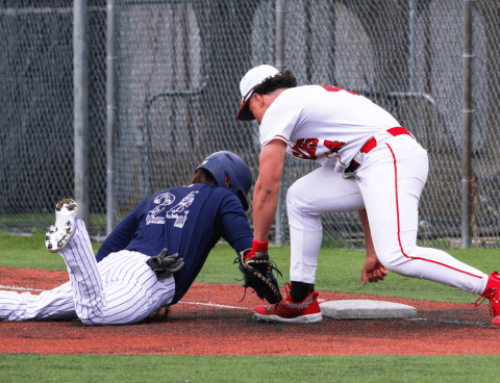Shortstop workouts have a special place in my heart. As a former high school and college middle infielder, I understand the high demands placed on athletes who play this important position. And as a former high school and college coach, I also know what coaches look for in a quality shortstop.
University of Hawaii head baseball coach Mike Trapasso says, “a lot of coaches at the college level will tell you, if they had their preferences, they’d only recruit shortstops, pitchers and catchers. At the high school level, you put your best athlete at shortstop or catcher.”
But for both baseball and softball players, when it comes to working out, more is not necessarily better. Although lifting weights will increase your strength, flexibility and stamina, if you don’t adapt these attributes to your position, you won’t become a better player. This is why I’m a firm believer in spending no more than 60 minutes per shortstop workout session. I also want to emphasize that “working out” is not limited to the gym. Working out on the field is just as, if not more, important, than being a gym rat.
Proper shortstop workouts will help to increase skill levels for the tools that coaches and scouts are looking for.
The following two-day workout can be done on the field with teammates as a great way to end a practice session. It can also help to build team unity. Day 1 is a power workout and Day 2 is focused more on speed, agility and quickness.
All of the skills you need for playing baseball or softball—running, throwing and hitting—involve multiple joints and multiple muscles moving and working together. So why not train your bodies the same way? Use kettlebells, dumbbells or resistance bands in these workouts; the exercises can be adapted to accommodate any of them. An agility ladder or cones will be necessary for the speed days. I also advise giving yourself a few days rest between workouts to allow for proper recovery, growth and repair. The last thing you want to do is to get burned out by doing too much—or worse, to sustain an injury that could cost you valuable playing time.
Before each workout, warm up and stretch properly. Your 10-to-12-minute warm-up should include light jogging and dynamic movements (arm circles, quad walks, glute walks, shuffles, etc.). This will prepare your body for its upcoming workload. End each session with a cooldown that includes light jogging and static stretching.
If you don’t know how to do any of these movements or want to see some great dynamic stretches.
Day 1 (strength / power)
- Planks: 3 sets/ 30 – 60 seconds
- Russian Twists: 3 sets/ 45 seconds
- Push Ups: 3 sets until failure
- Two-Hand Kettlebell Swings: 3 sets/ 45 – 60 seconds
- Squat and Press: 3×10 – 12
- Cleans: 3×10 – 12
- Bear Crawls: 3 sets/30 seconds
Day 2 (speed)
- Planks: 3 sets / 30 – 60 seconds
- Side Planks: 3 sets / 30 – 60 seconds
- Jumping Rope: 3 sets / 45 – 60 seconds
- One-Foot Runs (ladder): 3 sets
- Two-Foot Runs (ladder): 3 sets
- Lateral Runs (ladder): 3 sets
- Icky Shuffle (ladder): 3 sets
- Sprints: 10 – 15x / 100 feet (Sprint, then walk back to your starting position. This is your rest before your next sprint)
RECOMMENDED FOR YOU
MOST POPULAR
Shortstop workouts have a special place in my heart. As a former high school and college middle infielder, I understand the high demands placed on athletes who play this important position. And as a former high school and college coach, I also know what coaches look for in a quality shortstop.
University of Hawaii head baseball coach Mike Trapasso says, “a lot of coaches at the college level will tell you, if they had their preferences, they’d only recruit shortstops, pitchers and catchers. At the high school level, you put your best athlete at shortstop or catcher.”
But for both baseball and softball players, when it comes to working out, more is not necessarily better. Although lifting weights will increase your strength, flexibility and stamina, if you don’t adapt these attributes to your position, you won’t become a better player. This is why I’m a firm believer in spending no more than 60 minutes per shortstop workout session. I also want to emphasize that “working out” is not limited to the gym. Working out on the field is just as, if not more, important, than being a gym rat.
Proper shortstop workouts will help to increase skill levels for the tools that coaches and scouts are looking for.
The following two-day workout can be done on the field with teammates as a great way to end a practice session. It can also help to build team unity. Day 1 is a power workout and Day 2 is focused more on speed, agility and quickness.
All of the skills you need for playing baseball or softball—running, throwing and hitting—involve multiple joints and multiple muscles moving and working together. So why not train your bodies the same way? Use kettlebells, dumbbells or resistance bands in these workouts; the exercises can be adapted to accommodate any of them. An agility ladder or cones will be necessary for the speed days. I also advise giving yourself a few days rest between workouts to allow for proper recovery, growth and repair. The last thing you want to do is to get burned out by doing too much—or worse, to sustain an injury that could cost you valuable playing time.
Before each workout, warm up and stretch properly. Your 10-to-12-minute warm-up should include light jogging and dynamic movements (arm circles, quad walks, glute walks, shuffles, etc.). This will prepare your body for its upcoming workload. End each session with a cooldown that includes light jogging and static stretching.
If you don’t know how to do any of these movements or want to see some great dynamic stretches.
Day 1 (strength / power)
- Planks: 3 sets/ 30 – 60 seconds
- Russian Twists: 3 sets/ 45 seconds
- Push Ups: 3 sets until failure
- Two-Hand Kettlebell Swings: 3 sets/ 45 – 60 seconds
- Squat and Press: 3×10 – 12
- Cleans: 3×10 – 12
- Bear Crawls: 3 sets/30 seconds
Day 2 (speed)
- Planks: 3 sets / 30 – 60 seconds
- Side Planks: 3 sets / 30 – 60 seconds
- Jumping Rope: 3 sets / 45 – 60 seconds
- One-Foot Runs (ladder): 3 sets
- Two-Foot Runs (ladder): 3 sets
- Lateral Runs (ladder): 3 sets
- Icky Shuffle (ladder): 3 sets
- Sprints: 10 – 15x / 100 feet (Sprint, then walk back to your starting position. This is your rest before your next sprint)











